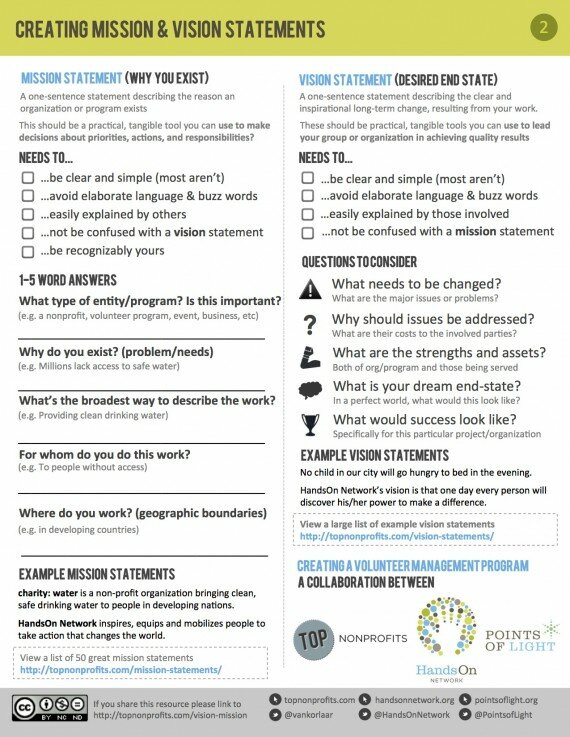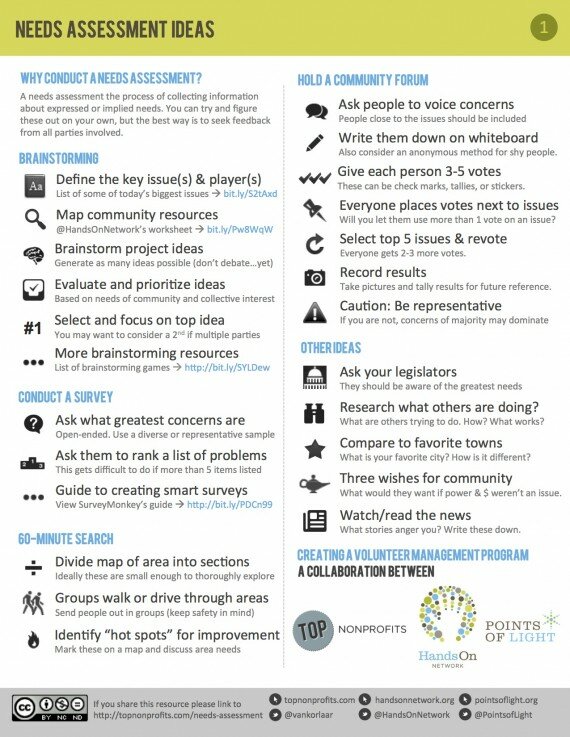 On Monday we offered some tips for volunteering with schools. Today, we offer up some more tips for getting volunteer projects off of the ground. Have you ever planned a volunteer project in a school? Do you have any tips to share? Let us know in the comments!
On Monday we offered some tips for volunteering with schools. Today, we offer up some more tips for getting volunteer projects off of the ground. Have you ever planned a volunteer project in a school? Do you have any tips to share? Let us know in the comments!
Use Community Resources
Schools are often short of resources. If you are running a sports program, arts club, or any other project that requires materials, you will probably need to solicit donations. Local businesses and restaurants may be willing to contribute. Community centers may have supplies or meeting space to share. Large projects can have fundraisers and donation drives to support their needs. The Volunteer Spot blog has some great ideas for fundraising.
Follow Through on Commitment
Once you start a project, teachers, staff, parents, and students will become dependent on your work. It is important to carry through with your promises and commitment. Never bite off more than you can chew and be honest about your time commitment and availability. If you begin to feel overwhelmed, remain open and honest with those you are working with and work together to seek a solution.
Evaluate Outcomes and Measure Success
As a volunteer, it is beneficial to evaluate your work and consider areas for improvement. Speak to teachers and school administrators beforehand to discuss appropriate benchmarks. There may be tangible measures of success such as improved grades (although some school policies don’t allow grades to be shared), test scores, knowledge level, or attitudes toward learning.
Or you could simply observe that you engaged a group of students, completed a large product, brought children safely to and from school, or filed a large stack of papers.
Recognize Everyone Involved
Throughout your involvement as a school volunteer, make sure to show appreciate to all those involved. This might include fellow volunteers, teachers, staff, or students. Below are tips:
- Deliver recognition in a personal and honest manner. There’s no need to be disingenuous or to exaggerate someone’s contribution.
- Tailor your recognition and reward to the unique needs of the people involved. Have a variety of recognition and reward options available.
- Recognize contributions throughout the project – timing is crucial! Time delays weaken the impact.
- Have a clear message. Be sure that students and volunteers understand the criteria used to determine awards.
- Students can also be recognized through special certificates or small rewards such as erasers, pencils, journals, or rulers. (Note: toys and candy often become a distraction in the classroom.
The best way to recognize students and volunteers is to treat them with respect and give them support and praise throughout the project.
It’s vitally important to say thank you during the project and once the project is complete. Check out Eight Tips for Writing the Perfect Thank You Note
Reflect, Evaluate, and Move Forward
Reflection is strongly encouraged after every service experience. Reflecting as a group, with all the participating students and volunteers, can create a stronger sense of accomplishment and connection. This group conversation can often deepen student’s and volunteers’ understanding of the social issue your project addresses and increase their commitment to service and learning.
Here are some sample reflection questions to help facilitate a reflective discussion about the service project:
-
What? What issue(s) was being addressed? What did you notice happening around you during the project? What were the results/outcomes of the project?
-
So what? What did you think about during the project activity? How has it affected you?
-
Now what? What are the larger issues that caused the need for you to participate in this service activity? How did your efforts help? What else needs to be done to improve these problems? How will you apply what you learned in the future?
In addition to reflection, it is important to evaluate the project. This means reviewing the effectiveness of the project components: the planning, coordination, delivery, implementation, logistics and management.
 At the end of a project, solicit feedback from students, volunteers, parents, and teachers. Feedback is a gift – use it as an opportunity to reflect on the overall management and implementation of the project. You can provide a feedback form (this is probably best if you are leading volunteers or students), or have less-formal conversations.
At the end of a project, solicit feedback from students, volunteers, parents, and teachers. Feedback is a gift – use it as an opportunity to reflect on the overall management and implementation of the project. You can provide a feedback form (this is probably best if you are leading volunteers or students), or have less-formal conversations.





 Let’s face it. High fives are awesome, but they’re not always the best way to let someone know you care about them and appreciate their work.
Let’s face it. High fives are awesome, but they’re not always the best way to let someone know you care about them and appreciate their work.

 Are you looking to volunteer at your local school, but don’t know where to get started? You can follow these steps to find a volunteer role that suits you. Use them to determine how to make an impact, measure your success, and continue to grow and learn.
Are you looking to volunteer at your local school, but don’t know where to get started? You can follow these steps to find a volunteer role that suits you. Use them to determine how to make an impact, measure your success, and continue to grow and learn. Neighboring is an asset- and empowerment-based approach that engages underserved and underresourced community members to find innovative, sustainable solutions to address local challenges. Asset-based refers to the acknowledgment that all members of a community can offer something to improve the community: talents, skills, knowledge, or resources. The resident-led approach primarily focuses on a specific geographic area (i.e., ZIP code, neighborhood, or street) in which the majority of the volunteers, activities, and organization come from within a community.
Neighboring is an asset- and empowerment-based approach that engages underserved and underresourced community members to find innovative, sustainable solutions to address local challenges. Asset-based refers to the acknowledgment that all members of a community can offer something to improve the community: talents, skills, knowledge, or resources. The resident-led approach primarily focuses on a specific geographic area (i.e., ZIP code, neighborhood, or street) in which the majority of the volunteers, activities, and organization come from within a community.
 Whether you represent a nonprofit organization, volunteer center, corporation, community foundation, community of faith, or other group, these guidelines can help you thoughtfully approach and organize a successful partnership, thereby playing a key role in strengthening neighborhoods and families.
Whether you represent a nonprofit organization, volunteer center, corporation, community foundation, community of faith, or other group, these guidelines can help you thoughtfully approach and organize a successful partnership, thereby playing a key role in strengthening neighborhoods and families. Meet with key community leaders or invite community representatives to forums where they can participate and become informed about resources for the neighborhood. Develop connections with leaders and residents that foster sustainable activities to address the issues they want to work on in their community.
Meet with key community leaders or invite community representatives to forums where they can participate and become informed about resources for the neighborhood. Develop connections with leaders and residents that foster sustainable activities to address the issues they want to work on in their community. 1. Define Your Goals
1. Define Your Goals 4. Plan the Project
4. Plan the Project 7. Engage the Media
7. Engage the Media
